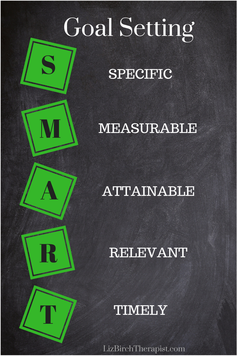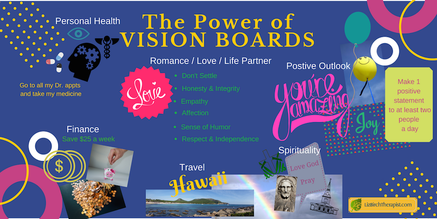 Anxiety is the number one reason people come into therapy. Are you trying to manage life with anxiety? Imagine what your life would be like if you were able to minimize your anxious thoughts? Imagine what your days will be like with more calmness. You may have thought about working with a therapist but just haven’t taken that step. When we are faced with the unknown we tend to avoid. I thought it might help if I shared with you what may happen in a therapy session with me as we work together on reducing that anxiety you’ve been living with. Follow along as if you are in session with me. Think about the questions. How would you answer them? Take notes. Go ahead and perform the coping exercise I describe. Now imagine you just walked into my calming office. Take a seat, anywhere you’d like. Let’s begin . . . I’d like to get to know a bit more about your goals and history of anxiety. What would you like to gain out of therapy and particularly this session? Anxiety feels different for everyone so therapy with me is very personalized for your specific issues. It’s also important to realize that therapy is a partnership between you and me – the therapist. I will be here to guide you, gently push you and help you realize that with your participation you can minimize your anxious thoughts. Have you ever been diagnosed with an anxiety disorder such as Social Anxiety, Obsessive-Compulsive Disorder, Panic Disorder, Post Traumatic Stress Disorder, or any specific phobia? Let’s get more specific about your goals. If you don’t have a goal in mind you won’t know when you’ve gotten there. What three goals are you looking to gain? They may be something like, decreasing your number of panic attacks, reduce your anxiety around specific relationship issues, decreasing performance anxiety at work. Share what your three goals are - the more specific, the better. Write them down. For each goal I’d like to know how your life would be different when you reach each goal. For example, “I’ll be able to perform better at work”, “It’ll be easier to socialize with others”, “I will have more days of the week with no panic attacks”. Write down how you imagine your life will be different with minimal or no anxiety. In order to continue to measure your improvement I will most likely have you complete a GAD-7 quick assessment often. It’s an easy 7 question rating scale. I’d like you to complete it at least once or twice a week. Completing this easy rating scale will help you track your improvement. I will provide you access to this assessment. Let’s put some focus on your symptoms and how they manifest for you. This is very important. Here are a few more questions. How long have you been trying to manage your anxiety? When does your anxiety affect you the most – at home, when you first wake up, at work, socially? When did your anxiety begin affecting you? What treatments have you had in the past? What treatments helped and which ones didn’t? It’s important to discuss triggers. What are your triggers that cause anxiety? For example, chronic stress, health issues, domestic violence, military duties, financial concerns, not feeling safe, etc. Write down all of your triggers. How have you been coping with your anxiety, if you have at all? For example, do you have specific ways of distracting yourself from the anxious thoughts? Behavioral coping skills might be walking away, exercising, taking a nap, focusing on slow breathing, etc. Some cognitive coping skills could be thinking positive thoughts, saying positive affirmations, brainstorming about solutions, thinking through and making a to-do list. Write down some ways you’ve been coping with your anxiety. You need actionable strategies and skills to overcome your anxiety. Having a physical awareness is important. What are your physical / emotional reactions to anxiety? Headaches, butterflies in your stomach, hands are shaking, feeling nauseous, your heart feels heavy today or an overwhelming feeling of just not feeling right. Focusing on your physical symptoms are very important. Your physical feelings work hand in hand with your thoughts. That’s the body and mind connection. We need to regulate our body first to regulate our mind. Lets focus on your body first so that you can regulate your mind. We can’t focus on one and ignore the other. I’d like you to work through this exercise so you can enhance your body and mind connection. You’ll be scanning your body with purpose so that you can regulate your body naturally. This is called a Somatic experience which focuses on the body. You can help your body calm down naturally. And remember you can’t relax your mind if you’re physically having issues such as trembling hands, headaches, pounding heartbeats. Dr. Peter Levine is the founder of Somatic Experiencing and introduced it in 1997. He introduced the exercise I’m going to describe below which will work through your physical symptoms. This exercise gently invites awareness back into the body and can create experiences of safety and calm. Go ahead and follow along below. Somatic Exercise: Get comfortable, sitting or laying down, at first you'll need to read through the instructions but eventually it's beneficial if you close your eyes. Put one hand on your forehead and one hand on your heart. Think about a mildly anxious moment and notice how you are physically feeling. How is your body responding? Just let yourself feel it. Pay attention to your hand on your forehead. Just be there and focus on your hand on your forehead. Don’t rush it. Notice any response. Now focus on your hand on your heart. Don’t do anything, just observe. Focus on any physical feelings. No need to address anything, just notice any feeling you have. Now go inside your body by focusing on any area between your hands, notice any sensations on your forehead, face, neck, shoulders, chest. Notice any physical feelings. How do those body parts feel? Do they feel tense, soft, fidgety, or comfort. Just notice it, be curious. Be with those sensations and wait for the shift. Notice how you are breathing, stay there, notice it. Now take your hand from your forehead and place it on your belly. Now focus on the sensations in your belly. Is it relaxed, tense, warm, cold, heavy, and/or tingling? No need to do anything, just notice the physical feelings and wait for the shift or change in your body. Now bring your attention to what’s going on. Notice any sensations that are going on in your entire body - your chest, back, neck, arms, fingers. Wait to notice any shift or change. Now take both hands and place them on your thighs. What sensations are you feeling? Gently press. Be observant, no need to do anything. Let your body just happen. Notice how it feels. Your body will regulate itself inside and outside. Notice how you are breathing. Count to three and slowly open your eyes and take a deep breath and bring your attention back to the room. Notice any shifts you may be feeling now. What specific parts were regulated? Give yourself 5 minutes to focus on your body. What body parts were stable and relaxed? Notice the relaxation in your body now? If there is some tension, what got in the way? Were you able to get out of your mind and focus on your body? Do you feel safe in your body and your environment now? The two key concepts in this exercise are feeling a sense of safety and a sense of present moment in your body. This beautiful mindfulness exercise only takes 5-10 minutes. It becomes easier and you will be better able to focus the more often you do it. This will create a better relationship within yourself and enable a sense of compassion and curiosity. I encourage you to practice this self-holding exercise at least two times a day in a neutral setting and neutral mood. Then describe how your mood is each time you complete this. Utilize a 10-point scale with 0 being neutral and 10 being very anxious. It’s important to check in with yourself. Practice this coping skill daily. If anxiety is something you’d like to reduce and you’re ready to begin healing, feel free to reach out to me. Schedule a free 15-minute consultation with me or go ahead and call to set up an appointment. At the moment I’m scheduling appointments about a month out, unless I get a cancellation. So don’t put this off. At the onset of this article I asked that you “Imagine what your life would be like if you were able to minimize your anxious thoughts? Imagine what your days will be like with more calmness.” I don’t want you to have to only imagine that any longer. I want you to begin living it. I’m looking forward to hearing your story. I am a licensed Marriage & Family Therapist who can provide services with anyone who resides in the State of California. I have also been trained in Clinical Hypnotherapy which is beneficial for more specific goals. Liz Birch, LMFT, CHt ~ 714-584-6047 ~ LizBirchMFT@gmail.com The information provided through this website is for informational purposes only.
This information is not intended to and does not create a therapist-client relationship.
2 Comments
 Self-esteem is a wonderful but delicate thing. When our self-esteem is high, we feel more resilient, we're less vulnerable to anxiety and rejection, and less cortisol — the stress hormone — is released into our bloodstream. But improving self-esteem can be challenging, especially if we've experienced setbacks in the past. There are different types of self-esteem. Scientists agree that our feelings of self-worth are global (how you feel about yourself) and specific (how you feel about yourself in specific roles, such as a parent or a cook). Our self-esteem is ever changing. It fluctuates day to day and hour to hour. We might wake up feeling great about ourselves one day and insecure the next. We think of our self-esteem as being either generally good or bad but it’s much more fluid, shifting up and down based on internal feedback we give ourselves and external feedback from others. So my goal is to work really hard for super high self-esteem… right? Well, higher self-esteem is not necessarily better. Your self-esteem should be high but not too high. Narcissists have high feelings of self-worth but their self-esteem is unstable. Small “insults” can make a narcissist feel terribly “wounded”. That is why people with stable self-esteem tend to be healthier psychologically. Higher is not necessarily better. People with low self-esteem are resistant to positive feedback. Having low self-esteem makes us resistant to positive feedback that could improve our feelings of self-worth. When our self-esteem is low we feel unworthy of praise and get stressed by the hightened expectations. Positive affirmations make people with low self-esteem feel worse. The very people with low self-esteem, who need positive affirmations most, tend to feel worse about themselves when they read them. When a statement falls too far outside our belief system we tend to reject it. Don’t critisize yourself. We are generally harder on ourselves when we shouldn’t be. When our self-esteem is low self-criticism can really make it worse. Treat yourself some compassion just like you would a friend. To improve your self-esteem find your competencies and develop them. Self-esteem is built by demonstrating real ability and achievement in areas of our lives that matter. If you pride yourself on being a good cook, throw some dinner parties. If you’re a good runner, run some races. Figure out your core competencies and find opportunities that accentuate them. Affirm your real wealth. This exercise helps revive your self-esteem after a blow: Make a list of meaningful qualities. Example, if rejected by a date, list qualities that make you a good prospect (being loyal): failed to get a promotion, list the qualities of a valuable employee (strong work ethic). Choose items on your list and write about why the quality is likely to be appreciated by others. Building up your self esteem can take some real work but if you stick with it, and do it correctly, the results can be amazing. Business Insider 2017 I am a licensed Marriage & Family Therapist who can provide services with anyone who resides in the State of California. I have also been trained in Clinical Hypnotherapy which is beneficial for more specific goals.
Liz Birch, LMFT, CHt ~ 714-584-6047 ~ LizBirchMFT@gmail.com  What is your inner child telling you? Do you want everyone to cater to your needs? Do you find yourself disappointed a lot? Do you have a lot of fear... anxiety? The idea of having an inner child may be foreign to most people. But all of us have a part of us that's still us as a child. It's possible that our inner child never fully grew up or may not be fully healed from pain in the past. Think about your current life and all the emotions and behaviors that you don't like and are continually trying to change. These emotions and behaviors come from our experiences from when we were small children. From birth to about 6 or 7 years old, our brain functions at a relatively slow pace, which is a very "receptive" brainwave state. At this time we are profoundly affected by our life experiences. Our beliefs about ourselves and others are formed during this time based on our life's experiences. As small children we will have been absorbing a great deal from our extended families, our caregiver(s), friends, religious institutions, etc. Our experiences may have been filled with love and support or they may have been filled with neglect and abuse. Our subconscious takes in all this information and holds on to it for the rest of our lives. We cannot change the script. The life we experienced happened, whether good or bad, it happened. And that script, how our brain processes our events, is designed to keep us safe. Hence, anxiety to keep us on the lookout for danger (as an example). All of our life experiences have been "logged" into our sub-conscious minds and bodies. This all creates the pool in which we float, or sink. Inevitably, the water will be a bit dirty - or it may even be like thick mud. In this pool is our self-esteem, body-image, family trauma, shame and secrets (even if not spoken about). We sink down into this pool, or mud, whenever we are overwhelmed by our negative thoughts, emotions, self-doubt or self-loathing. In therapy the aim is to sensitively lift out this dirt/mud, bit by bit, until we are left with just a stain of what was once there. In therapy you can learn how to meet, rescue and “adopt” this wounded child who still lives deep inside you. This process of meeting, rescuing and adopting your wounded child is an amazing process. Any why you? Because you are the only person who you can guarantee never to leave you! Signs that your Inner Child may be wounded: low self-esteem, poor body-image, mood and emotional imbalances, problems with boundaries being too rigid or too weak, problems with eating, harming yourself, being a rebel/ a hoarder/ a bully/ a perennial victim or a super-achiever, intimacy problems, commitment problems, a general lack of trust in yourself and others, criminal behavior, excessive lying, just to name a few. If you are in Orange County, California and interested in working on your Inner Child please feel free to reach out to me. We can begin with a free 15-minute consultation and go from there. Or you can reach out to any therapist in your area and ask if they do Inner Child work. I wish you all the best! I am a licensed Marriage & Family Therapist who can provide services with anyone who resides in the State of California. I have also been trained in Clinical Hypnotherapy which is beneficial for more specific goals.
Liz Birch, LMFT, CHt ~ 714-584-6047 ~ LizBirchMFT@gmail.com  Let me begin by saying Hypnotherapy is not a type of therapy in itself. However, it is a great aid to Cognitive Behavioral Therapy. Cognitive Behavioral Hypnotherapy, which combines hypnosis with cognitive-behavioral therapy, helps change unwanted patterns and behaviors by connecting with the subconscious mind. It helps with psychotherapy because the hypnotic state allows a person to explore more painful thoughts and feelings that may be hidden from the conscious mind. The positive suggestions that people are given while hypnotized are referred to as “post hypnotic suggestions” because they are intended to take effect after the person emerges from the deep relaxation or trance and is no longer under hypnosis. Experts say that hypnotherapy can help the "stuck" thought patterns that go along with depression, anxiety, OCD, and other mood disorders. The fact is, however, that hypnosis is a genuine psychological phenomenon that has valid uses in clinical practice. Simply put, hypnosis is a state of highly focused attention or concentration, often associated with relaxation, and heightened suggestibility. While under hypnosis, it seems many people are much more open to helpful suggestions than they usually are. "Hypnosis works and the empirical support is unequivocal in that regard. It really does help people," says Michael Yapko, PhD, a psychologist and fellow of the American Society of Clinical Hypnosis. Hypnosis has been used for centuries for pain control, including during the Civil War when Army surgeons hypnotized injured soldiers before amputations. Recent studies have confirmed its effectiveness as a tool to reduce pain. Among the leading researchers in the field is Guy H. Montgomery, PhD, a psychologist who has conducted extensive research on hypnosis and pain management at Mount Sinai School of Medicine, where he is director of the Integrative Behavioral Medicine Program. In a 2009 article in Health Psychology (Vol. 28, No. 3), Montgomery and colleagues reported on a study, which found that a combination of hypnosis and cognitive-behavioral therapy could reduce fatigue for breast cancer patients undergoing radiation therapy. Hypnotherapy is a safe procedure when done by a trained therapist. Hypnotherapy is not mind control or brainwashing. Hypnotherapy is specifically designed to fit your needs. This means that each hypnotherapy session is designed for just you and allows for a very individualized approach. The reason that hypnotherapy can be so effective is because it is so person centered. If you have tried other treatments and not seen results, you should give hypnotherapy a try due to the fact that it is so person centered. Check with your insurance company to see if they specifically cover hypnotherapy.
 The Vagus Nerve is the longest cranial nerve in your body. Vagus means “wanderer” in Latin, which accurately represents how the nerve wanders all over the body and reaches various organs. The Vagus Nerve is also a key part of your parasympathetic “rest and digest” nervous system. It influences your breathing, digestive function and heart rate, all of which can have a significant impact on your mental health. It’s important to increase the “tone” of your vagus nerve, as having a higher vagal tone means that your body can relax faster after stress. In 2010, researchers discovered a positive feedback loop between high vagal tone, positive emotions, and good physical health. So the more you increase your vagal tone, the more your physical and mental health will improve. Studies have shown that vagal tone is passed on from mother to child. Mother’s who are depressed, anxious and angry during their pregnancy have lower vagal activity. Once they give birth, the newborn also has low vagal activity and low dopamine and serotonin levels. Don’t worry if you think you might have a low vagal tone! You can take steps to increase it by stimulating your vagus nerve. This will allow you to more effectively respond to the emotional and physiological symptoms of your brain and mental illness. By stimulating your vagus nerve you can help treat mental health conditions such as depression and anxiety. So how does one stimulate their vagus nerve? Look at the list below! 1. Cold Exposure Researchers have found that exposing yourself to cold on a regular basis can lower your sympathetic “flight or fight” response and increase parasympathetic activity through the vagus nerve. Try finishing your next shower with at least 30 seconds of cold water and see how you feel. Slowly work your way up to longer periods of that cold-water blast. The lingering effects are worth it! 2. Deep and Slow Breathing Most people take about 10 to 14 breaths each minute. Taking about 6 breaths over the course of a minute is a great way to reduce stress. You should breath in deeply from your diaphragm. When you do this, your stomach should expand outward. Your exhale should be long and slow. This is the key to stimulating the vagus nerve and reaching a state of relaxation. 3. Singing, Humming, Chanting and Gargling The vagus nerve is connected to your vocal cords and the muscles at the back of your throat. Singing, humming, chanting and gargling can activate these muscles and stimulate your vagus nerve. This has been shown to increase heart-rate variability and vagal tone. 4. Meditation Research shows that meditation increases vagal tone and positive emotions and promotes feelings of goodwill towards you. Another study found that meditation reduces sympathetic “flight or fight” activity and increases vagal modulation. “OM” chanting, which is often done during meditation, has also been shown to stimulate the vagus nerve. 5. Exercise Not only does exercise help reverse cognitive decline but it’s also been shown to stimulate the vagus nerve, which may explain its beneficial brain and mental health effects. Walking, weighlifting and sprinting are the best forms of exercise but you should do what you enjoy so that you will maintain it consistently. 6. Socializing and Laughing Reflecting on positive social connections improves vagal tone and increases positive emotions. Laughter has been shown to increase heart rate variability and increase mood. And vagus nerve stimulation often leads to laughter as a side effect, suggesting their connection. So laugh with your friends as much as possible! Conclusion By stimulating the vagus nerve, you can send a message to your body that it’s time to relax and de-stress, which leads to long-term improvements in mood, wellbeing and resilience. So give some of the above suggestions a try and see if you can overcome some of the depression and anxiety that arise. http://pss.sagepub.com/content/early/2013/05/06/0956797612470827.abstract www.ncbi.nlm.nih.gov/pubmed/22894892 I am a licensed Marriage & Family Therapist who can provide services with anyone who resides in the State of California. I have also been trained in Clinical Hypnotherapy which is beneficial for more specific goals. Liz Birch, LMFT, CHt ~ 714-584-6047 ~ LizBirchMFT@gmail.com  We've just ended another holiday season. This is a time where, instead of joy, you may have been forced to be with family members you wished you didn't have to be with. You might have been present out of a feeling of obligation. Instead of "how are you?", "I'm so glad to see you... tell me about your successes", did you find yourself subject to criticism, as usual? Is there one person who always finds fault in what you do? Is that person your parent? Toxic people prey on others. They dominate and control, disregard your needs and feelings. They focus on themselves and don’t seem interested in you at all. They seem to see other people as tools instead of whole, autonomous beings. They look to take energy from others because they lack their own vital energy. Toxic people drain you! They create drama and chaos but they don’t see that this is what they are doing. They are the person who walks into a room and others will leave or walk away to avoid them. Toxic people not only are taking energy, but they are also throwing their own pain and raw emotions onto everyone they interact with. This is because they lack the capacity to deal with the severity of a trauma that may have occurred in early childhood that caused them to have a worldview that people are out to harm them. Because of this view, that others are out to harm them, they have problems connecting with others. Toxic people don’t appreciate you, so they don’t want you to appreciate yourself, either. They need you to ignore your own needs and desires so you can devote all your time to them. They use intimidation to keep you down, which means keeping you from living your truth. But what if this toxic person is your parent? This is the person who is meant to love you, hold you, and take the sharp edges off the world, while teaching you with love, wisdom and warmth how to do it for yourself. There is a different kind of hurt that can only come from a toxic parent – someone who is meant to love you. It’s a hurt that affects you to the core. Nobody is perfect, including our parents, but there is a point at which imperfect becomes destructive, taking away from children the love, warmth and nurturing they deserve and require and replacing it with something awful. When children are raised on a diet of criticism, judgment, abuse and loathing, it’s only a matter of time before they take over from those parents, delivering with full force to themselves the toxic lashings that have been delivered to them. A toxic parent has a long list of weapons, but all come under the banner of neglect or emotional, verbal or physical abuse. Toxic parents lie, manipulate, ignore, judge, abuse, shame, humiliate and criticize. Nothing is ever good enough. You get on the Junior Varsity team but they don’t understand why you didn’t make Varsity. You get elected as your class Secretary but they don’t understand why did didn’t go for and get elected as class President. You get an A in math but they complain you should have gotten an A+. They’ll demean you then complain you’re a crybaby when you show you are hurt. The toxic parent shows no warmth, caring or security which is paramount in developing attachment in children. Any negative behavior that causes emotional damage or contaminates the way a person sees himself or herself, is toxic. A toxic parent treats his or her children in such a way as to make those children doubt their importance, their worth, and that they are deserving of love, approval and validation. The truth is that you, like every other small person on the planet, deserved love, warmth, and to know how important you were. You’re not useless at life – you’ve bought in to the messages that were delivered by a parent too broken to realize what they were doing. But it doesn’t have to stay that way. The good news in this regard is that:
In knowing all that, don’t wait for your parents to change, because it’s not likely going to happen. You have to become a fully autonomous person, completely responsible for your own life. But you must be aware that you can’t change lifelong patterns overnight, no matter how self-defeating they may be. Emotional work on yourself can be pretty heavy, and thus it’s easy to start looking for excuses not to do it. In such cases, slowing down isn’t a problem. Just make sure you never stop. How to heal from a toxic parent. 1. It’s okay to free yourself from a toxic parent. This is such a difficult decision, but it could be one of the most important. We humans are wired to connect, even with people who don’t deserve to be connected to us. Sometimes though, the only way to stop the disease spreading is to cut it off. It doesn’t matter how much you love some people, they are broken to the point that they will only keep damaging you from the inside out. You’re not responsible for them or for the state of your relationships with them, and you are under no obligation to keep yourself being abused, belittled, shamed or humiliated. Healing starts with expecting more for yourself, and you’re the only person who can make that decision. You must absolutely let go of the responsibility for the painful events of your childhood. You were in no way responsible for your parents’ toxic behavior. You were in no way responsible for:
The toxic behavior is completely your parents’ responsibility. Even if no harmful intent existed, it’s the final result that counts. 2. It’s also okay to stay in a relationship with your toxic parent. Don’t be harsh on yourself if you stay in the relationship. The act of returning to an abusive relationship can trigger self-loathing. ‘Why aren’t I strong enough?’ Know that loyalty is such an admirable trait, even if it gets in the way of your capacity to protect yourself. Own where you are and give yourself full permission to be there. Accept that for now, this is where you’re at, and fully experience what that’s like for you. You’ll never love yourself enough to change your expectations if you’re flogging yourself for not being strong enough. It takes tremendous strength to keep walking into a relationship that you know is going to hurt you. When you’re ready, you’ll make the move to do something differently. For now though, wherever you are is okay. 3. Be honest about the relationship. If you’re going to stay, know that it’s okay to put a boundary between yourself and your parent. You can act from love and kindness if you want to – but don’t stay in the relationship unless you can accept that the love you deserve will never come back to you. If it were going to, it would have reached you by now. See their behavior for what it is – evidence of their breaks, not evidence of yours. Put a bubble around yourself and let their abuse bounce off. Love yourself and respect yourself enough to fill the well that they bleed dry. They might not be capable of giving you the love and respect you deserve, but you are. 4. Be careful of repeating the patterns. You might find yourself drawn to people who have similarities to your toxic parent. There’s a really good reason for this. All of us are driven to find an ending to things that remain unresolved. Because love, warmth and nurturing are such an important part of child development, yet so elusive for the child of a toxic parent, it’s very normal for those children to be driven to find a resolution to never feeling loved, secure or good enough. They will look to receive what they didn’t get from their parents in others and will often be drawn to people who have similarities to their toxic parent. The theory is, with similar people, the patterns will be easier to replicate, and the hope of an ending closer to the desired one – parent love – will be easier to fulfill. The pattern often does repeat, but because of the similarities to the parent, so does the unhappy ending. The decisions aren’t conscious ones, so to move towards healing, the automatic thoughts and feelings driving the choices need to be brought more into awareness. If this is something that’s familiar for you, it’s possible that you are being drawn to the wrong people because they remind you of your toxic parent, and somewhere inside you where you wanted things to stay hidden, is the wish that you’ll get from them what you weren’t able to get from your parent. Look at the people in your life and explore the similarities they have with your own parents. What do they do that’s similar? What do you do that’s similar to the way you are in your relationship with your parents? Which needs are being met? What keeps you there? The more awareness you have, the more you can make deliberate decisions that aren’t driven by historical wants. 5. Acknowledge your right to be loved and respected. One of the greatest acts of self-love is owning your right to love and respect from the people you allow close to you. You’re completely entitled to set the conditions for your relationships, as other people are to set the conditions for theirs. We all have to treat those we love with kindness, generosity and respect if we want the same back. If those conditions aren’t met, you’re allowed to close the door. You’re allowed to slam it closed behind them if you want to. 6. Be careful of your own toxic behavior. You’ve been there, so you know the behaviors and you know what they do. We’re all human. We’re all going to get it wrong sometimes. Toxic behavior though, is habitual and it will damage the members of your own little tribe as surely as it damaged you. You don’t have to be a product of the cruel parenting that was shown to you, and this starts with the brave decision that the cycle stops at you. People who do this, who refuse to continue a toxic legacy, are courageous, heroic and they change the world. We’re here to build amazing humans, not to tear them down. How would your life have been different if your parent was the one who decided that enough was enough? 7. You’re allowed to make mistakes and you’re allowed to do it on your own. You may have been lead to believe that you’re not enough – not smart enough, beautiful enough, funny enough, strong enough or capable enough. The truth is that you are enough. Open yourself up to the possibility of this and see what happens. You don’t need to depend on anyone and making mistakes doesn’t make you a loser. It never has. That’s something you’ve been lead to believe by a parent who never supported you or never gave you permission to make mistakes sometimes. Make mistakes now, it’s okay. Give yourself full permission to try and miss. There will be hits and there will be misses. You don’t even know what you’re capable of because you’ve never been encouraged to find out. You’re stronger than you think you are, braver, better and smarter than you think you are, and now is your time to prove it to yourself. 8. Document the beliefs that hold you back. (And get yourself a rubber band.) Document the beliefs that hold you back – write them down. The ones that get in your way and stop you from doing what you want to do, saying what you want to say or being who you want to be. Were you brought up to believe your opinion doesn’t count? You were brought up to believe that parents are always right? You were most likely brought up to believe that you’re unlovable, unimportant, stupid, annoying, incapable and worthless. Now beside each belief, write what that belief is costing you. Has it cost you relationships, happiness, freedom to be, to experiment, or to explore? Then, rewrite the script. Thoughts drive feelings, behavior, what you expect for yourself and what you expect from relationships and the world. How are you going to change those beliefs? Just choose one or two to start with and every time you catch yourself thinking the old thoughts, actively replace it with a new, more self-nurturing thought – then act as though that new thought is true. You don’t have to believe it – just pretend it is. Your head will catch up when it’s ready. If it’s difficult to break out of the old thought, try this: wear a rubber band (or a hair band) around your wrist. Every time you catch yourself thinking the old thought, give the band a little flick. This will start to train your mind to let go of the old thoughts that have no place in your life anymore. You just need a little flick, no need for pain, your old thoughts have been doing that long enough already. There is no right or wrong on this. All the answers, strength and courage you need to do what’s right for you is in you. You just need to give yourself the opportunity and the reason to hear it. 9. The dreaded “shoulds” - get rid of them. “Shoulds” are the messages we take in whole (introject) from childhood, school, relationships, and society. They guide behavior automatically and this can be a good thing (“I should be around people who respect me”) or a not so good thing (“I should always be nice”). Take a close look at your “shoulds” and see if they’ve been swallowed with a spoonful of poison. Our “shoulds” come from many years of cultivating and careful pruning, so that when that “should” is fully formed, it automatically directs you without any thought. It’s likely that the “should” that’s keeping you stuck has come from the person who wanted to keep you that way. Were you brought up feeling indebted to your parents? Did they make you feel you owe them? Did they make you feel like you’ll never cope if you separate properly from them? Did they deliver you messages to keep you small, quiet, or hidden? Believing the messages may have worked when you were younger, but it doesn’t have to be that way now. Don’t pick up from where they left off. You’re older now, with different circumstances, and in a different environment. Bring your “shoulds” out in the open so your actions can be more deliberate. If your “shoulds” are working for you, love them up and keep them, otherwise let them go. 10. Nobody is all good or all bad. Let that guilt go. One of the things that make ending any relationship so difficult is that there will be traces of exactly what you want. Even toxic parents can sometimes be loving, warm or nurturing, though it’s mostly, if not always, done to further their own agenda. In the same way that being ‘a little bit bad’ probably isn’t enough to sever an important relationship, being ‘a little bit good’ isn’t enough reason to keep one. Step back and take a look at the big picture. If you feel miserable in the relationship more than you feel good, question your reasons for staying. If it’s because your toxic parent is old, frail, sad or lonely, that might be all the reason you need to stay, and that’s okay. If it is, own the decision in strength and put limits on contact or how much you will give to the relationship. You’re entitled to take or give as much to the relationship as you decide. Just whatever you do, do it deliberately, in strength and clarity, not because you’re being manipulated or disempowered. The shift in mindset seems small, but it’s so important. 11. Work on building yourself up. Toxic environments are toxic to the brain – we know that with absolute certainty. The human brain is incredibly adaptive, and in response to a toxic environment it will shut down so as to protect itself as much as it can from the toxicity. When this happens, as it does during prolonged periods of emotional stress, the rate at which the brain produces new neurons (neurogenesis) slows right down, ultimately making people vulnerable to anxiety, depression, cognitive impairment, memory loss, reduced immunity, loss of vitality, reduced resilience to stress, and illness (research has shown that migraine and other pain conditions are more prevalent in people who were brought up in abusive environments, though the exact reason for the relationship is unclear). We also know, without a doubt, that the damage can be turned around. Diet (omega 3, green tea extract, blueberry extract, reduced intake processed sugar and unhealthy carbohydrates), exercise (anything that increases heart rate), and meditation (such as a regular mindfulness practice) will all help to rebuild the brain and heal the damage done by a toxic environment. Increasing neurogenesis will help to build resilience, cognitive function, vitality and protect against stress, anxiety and depression. Healing from a toxic parent starts with deciding that the lifetime of messages that have left you hollow or scarred are wrong. It means opening a heart that’s probably been closed for way too long, and receiving the love, approval and validation that has always been yours to own. Sometimes, it means realizing that parents break too, sometimes irreparably, sometimes to the point of never being able to show love to the people in their life who deserve it the most. Sometimes it means making the brave decision, in strength and with the greatest self-love and self-respect, to let go of the relationship that’s been hurting you. Breaking free of a toxic parent is hard, but hard has never meant impossible. With the deliberate decision to move forward, there are endless turns your story can take. You are a whole and valuable person deserving of respect and love. Be open to the possibilities of what that respect and love can bring. If you need help with leaving a toxic relationship, whether it be a parent or any one else, please reach out to a Marriage & Family Therapist in your area. They can help guide you through the process and work with you helping you see what a truly amazing person you are. I am a licensed Marriage & Family Therapist who can provide services with anyone who resides in the State of California. I have also been trained in Clinical Hypnotherapy which is beneficial for more specific goals.
Liz Birch, LMFT, CHt ~ 714-584-6047 ~ LizBirchMFT@gmail.com  Many of us have great intentions of reaching our goals. We may tell ourselves; "I'm going to work out more, I'm going to increase my sales this month, I'm going to work on home improvements this week, or I'm going to begin drinking less alcohol". All of those are great goals, however, it's too easy to not reach any of those goals if we phrase them as I wrote them. In order to be more successful in your goals you must get much more specific than the examples I listed above. A great system to use is the SMART goal setting system. SMART goal setting brings structure and traceability into your goals and objectives. SMART goals create clear milestones and an estimation of the goal's attainability. What does S.M.A.R.T. goal setting stand for? S = Specific
Being a therapist, I use this SMART system with many of my clients. I help them get very specific on what they want to accomplish in therapy. This may take a few sessions to figure out but it's important to clarify the goal. To have someone say, "I want to feel better about myself" is good, but it will be too difficult to know when my client will be there. So I dig a little deeper and ask my client, "What does that look like to you?" After some exploring my client may say, "Instead of crying 4 days a week, I want to work on only crying 2 days a week". That's very specific and attainable. We work on that goal and after a month or so we revisit the goal. Is the client crying less? How many days a week are they crying now?" Once they've reached crying only 2 days a week we set our next goal. How about crying only 2 times a month? Again a specific goal. This system works well when working on communication issues in relationships. A couple may argue every single day. So our measurable goal may be that they argue only 4 days a week. Of course, we don't want arguing at all, but is that realistic? Attainable? We set goals that we can be successful with. Once that goal is reached of only arguing 4 days a week we set a new goal of only arguing two days a week, and so forth. During the sessions, while working on goals, the therapist is exploring with the client what got them in their predicament. What changes need to be made and how can some of their problems be resolved. It's all a work in progress all striving for those specific, measurable, attainable, relevant, and timely goals. Why don't you think about a goal or two you'd like to reach? Then apply the SMART goal setting approach and see if that makes reaching your goals a bit more successful. I bet you'll be pleased with your results. If you are in my area and need help reaching your goals, please feel free to reach out to me and together we can work this system. It may take just a few sessions to get you set up and going. You can then check back a month or so later and we can explore how you are doing. My hope is for everyone to be successful in their goals, no matter how small or large. I am a licensed Marriage & Family Therapist who can provide services with anyone who resides in the State of California. I have also been trained in Clinical Hypnotherapy which is beneficial for more specific goals. Liz Birch, LMFT, CHt ~ 714-584-6047 ~ LizBirchMFT@gmail.com https://en.wikipedia.org/wiki/SMART_criteria
 I’ve always recognized that I tend to run on the perfectionistic side. I’ve always liked things neat and orderly. When I have a project to do I strive to get it done as soon as possible because I don’t like projects hanging around. Also, when working on anything, I want to do it right the first time because I don’t want to waste time having to do it again. On the one hand, I appreciate my intention to do my best at whatever I do, but on the other hand, I see how this mentality can paralyze my efforts and prevent me from taking risks and reaching my goals. I have since come to learn, in the past decade, that I will get more out of life, and strive farther if I am more relaxed and flexible regarding some of my actions. My perfectionistic attitude hasn’t completely left me but there is a part of me where I’m learning to expand my perspective, be okay with some failure, and on occasion work on tasks allowing more room for error. We all have the choice to change. We can choose to shift our perspective and tell a new story. I’ve written, in the past, about how we all can change our stories. We don’t have to continue living with the struggles we place on ourselves. We all can write our new life story that includes imperfections and it’s benefits. All of this reminds me of a woman I once worked with. Forty-five year old Jane* is a CEO of a large company with many employees who report to her. In addition to her typical CEO responsibilities she also is part of the training program and does monthly workshops teaching those in middle management how to be successful in their jobs, which ultimately benefits the company. On one hand Jane appreciates the opportunity to share her sharp business sense and to improve the job skills of those in middle management, but on the other hand she lives with hidden intense anxiety that is destroying her daily living. At the end of the day she’s exhausted and by the time she gets home she takes out her anxiety and stress on those closest to her. When I first met Jane I could see an unhappy woman, who enjoyed little, but she had an amazing job making great money. I asked her to tell me details of why she came to therapy. Then, we had the following exchange. Me: Think for a minute, Jane. You're home alone on Sunday with anxiety gnawing at you. What goes through your mind the second before you begin to feel that way? Jane: Tomorrow is work and a training day. Me: Okay, but what do you tell yourself that is so horrible about that? Jane: I might make a mistake. What if I tell middle management something wrong? I’ll embarrass myself. Me: Ah! So what if you did? Why would that be so horrible? Jane: I don't want to make a mistake. Me: I know and that's good. Wanting to do well keeps you motivated. But, what I'm hearing you say is that, not only do you not want to make a mistake, but that you must never make even one mistake. Jane: I’m a CEO. I’m supposed to know everything about my business. They expect that of me. I can't afford a mistake. Me: But, Jane, how in the world can you pull that off? How can you go through your professional life, much less even a single day, and never make a mistake? Sounds impossible to me. Even CEO’s are imperfect, fallible people. Aren't they? Jane: Of course, but I got where I am today because I was taught to do everything right. My father started the company, worked hard, grew it to where it is now and had high expectations of me. I have to be sure I put out quality work, to not accept anything but the best. God forbid I make a mistake! He’s gone now but I still can’t fail. Me: Well, that's a shame, because that sets up the anxiety you suffer. Think about it. You've taken an admirable desire to do the very best you can with each of your managers. And then you've convinced yourself that you absolutely must, or need to be, God's gift to perfection. With that “must be perfect” expectation banging around in your head, you bring on this misery every time you’re in front of people. Do you see that? Jane: Yes, I guess, I see it. Me: What does this demand for perfection get you? Jane: I suppose my anxiety. Me: Yes, and little, if any, happiness and pleasure in your work. Jane: Sad, but true. My synopsis: Jane had a strong desire to do well, which was appropriate, and it motivated her to give each manager her very best. But, she went beyond this desire to believing that she must—absolutely must—perform perfectly, never overlooking one piece of data or making even the slightest mistake. To her, it would be horrible to make an error and she feared being humiliated in front of her managers so much that her anxiety began to take over her life. Even past her father’s death she fears letting him down. She hated Sundays because that meant the following day was the pressure of being perfect at work. Me: I’ll bet you hold these perfectionistic expectations in other areas of your life as well, not just at work. Right? Jane: I’m sure I do. Me: Well, like where? Jane: I get nervous at family functions. Me: What's your attitude about that? Jane: What if I do something stupid? My extended family knows I’m a CEO of a company my father started and they have expectations that I carry myself a certain way. I don’t feel like I can “let down” and relax. I’m always on edge. Me: In other words, Jane, you must do well at all times and look good, or else. Jane: Yes, that’s right. Once we got to the core of Jane’s anxiety we began to focus our therapy goals on her perfectionism. As Jane learned to relax and let go some of her perfectionism she began to realize that her managers were seeing her in a more real and authentic way. She did make a mistake in one of her presentations and she learned the world didn’t collapse. She saw that when her managers saw her mistake, it took the pressure off of them to be perfect and their own anxiety reduced. Jane’s happiness began to increase and her Sunday’s were much more enjoyable. Her family also saw her more authentic, relaxed and fun to be with. Here are four benefits to being imperfect: 1. Less Stress - Ditching the “shoulds” and all-or-nothing thinking will allow you to find more peace and enjoy your daily accomplishments and successes while you learn from your mistakes and less than perfect outcomes. 2. Improved Relationships – When you can accept your limitations and imperfections, you give others the permission to be imperfect, as well. As your expectations and impossible standards for yourself lessen, so do those you held for the people in your life. Our outer world is a reflection of our inner world, so when we begin to value ourselves regardless of what we do or achieve in any area, we then begin to value others for who they are and not what they do. 3. Increased Energy – When all of your energy is no longer concentrated on worrying about what you SHOULD be doing and how you SHOULD be doing it, you free yourself up to focus on what really matters. 4. Healthier Self-Image – Accepting and appreciating our imperfections creates room for self-nurturing, compassion, and love. You can begin to appreciate the qualities, characteristics, and experiences that are unique to you without the need to be perfect. Bottom line, if you are struggling with perfectionism accept that you are a fallible human being, one who, by your nature, cannot ever lead an absolute perfect existence. Strive to do well and work at creating positive experiences throughout your life. But what is most important is to be authentic and realistic. Make the effort to let go of your perfectionism and you will see the positive results. * While the main parts of this client exchange are true, main facts have been changed to protect the client's anonymity. I am a licensed Marriage & Family Therapist who can provide services with anyone who resides in the State of California. I have also been trained in Clinical Hypnotherapy which is beneficial for more specific goals. Liz Birch, LMFT, CHt ~ 714-584-6047 ~ LizBirchMFT@gmail.com  Most of us don’t even scratch the surface of knowing who we really are, let alone figuring out what we have the potential to become. We are so confused that we keep oscillating between overconfidence and low self-esteem. One minute we are filled with a definite purpose for life and the next we move to the opposite end of the spectrum and are completely desolate. Knowing ourselves better is a boon to our lives. We’re able to make smarter decisions about what’s best for us. We’re able to create more satisfying lives – lives that are based on our core values and personal priorities. Often our identities contain a lot of “shoulds”. In other words, we strive to be what we think we should be. These “shoulds” may derive from society or our family and friends. I should like this. I should be that. I should behave in this way. I should say that. Who we are gets confused with and buried under the layers of who we think we should be. Strip away the “shoulds”, and think about who you really are. Simply ask, “Who am I?” You can start with statements like “I am a daughter” or “I am a writer” and progress to “I am happiest when I’m laughing with friends” or “I am learning to be kinder to myself.” If we begin asking ourselves the right questions, it may take us to the answers we need to gain clarity in our own self-discovery and lead us to a more fulfilling and happy life. Here are 28 questions that open the door to help you in having a real conversation with yourself. Spend some times on these and answer them as honestly as possible. You may find some uncomfortable and some difficult. Don’t filter your answers by what you think others may think but rather be true to yourself. This is how self-discovery begins. Enjoy!
I am a licensed Marriage & Family Therapist who can provide services with anyone who resides in the State of California. I have also been trained in Clinical Hypnotherapy which is beneficial for more specific goals. Liz Birch, LMFT, CHt ~ 714-584-6047 ~ LizBirchMFT@gmail.com  All top performers, regardless of profession, know the importance of picturing themselves succeeding in their minds before they actually do in reality. When you think of a big goal or dream that you want to achieve, it’s natural to think of all of the obstacles that will come your way. The problem is far too often we allow these obstacles to become so big in our minds that it inhibits us from moving forward. This is when many become satisfied with mediocrity. But what if you visualized yourself succeeding? What if you visualized yourself being the best in your profession? Consider these three examples:
If you can picture yourself achieving a goal, chances are you will. The more vivid you can get, the better it will work for you. What is a Vision Board? It’s a sacred place where you can place photos, trinkets, quotes, sayings, music lyrics, etc., anything you can think of, that represents your future goals and how you want to feel. Start thinking of your personal goals in life. Spend about 10 to 15 minutes picturing yourself achieving each one. Get as detailed as possible. Picture what you will do once your goal is reached. How amazing does it feel? How will this change the course of your life? Remember, the little details increase the likelihood of the big picture. A Vision Board gives you a visual to look at daily. Important: be sure to look at and focus on each entry on your Vision Board daily! Here’s how to create your Vision Board. What you’ll need:
How to do it: Turn off the TV and turn on some relaxing music. Light a candle and clear your space. As stated above, cut pictures, quotes, action words, feeling words out of magazines. You might want to use personal photos, pieces of fabric, coins, anything! When it comes to actually putting your stuff on the board, you may want to section your board off into themes, such as, “Finance”, “Career”, “Family”, “Romance”, “Travel”, “Personal Growth”, “Spiritual”, “Health”, or what ever you want. It might be helpful to leave space in between each item because clutter can be distracting. However, if you love the feeling of closeness and want everything to touch and overlap, then group it all together and overlap your objects. As for choosing what makes the final cut, lay everything out before you start gluing and pinning so you can get an idea of where you want everything. For ideas take a look at Pinterest! You'll find lots of Vision Boards. But remember, the most important part of your Vision Board is to look at it daily and remember your goals! I am a licensed Marriage & Family Therapist who can provide services with anyone who resides in the State of California. I have also been trained in Clinical Hypnotherapy which is beneficial for more specific goals. Liz Birch, LMFT, CHt ~ 714-584-6047 ~ LizBirchMFT@gmail.com |
|

 RSS Feed
RSS Feed